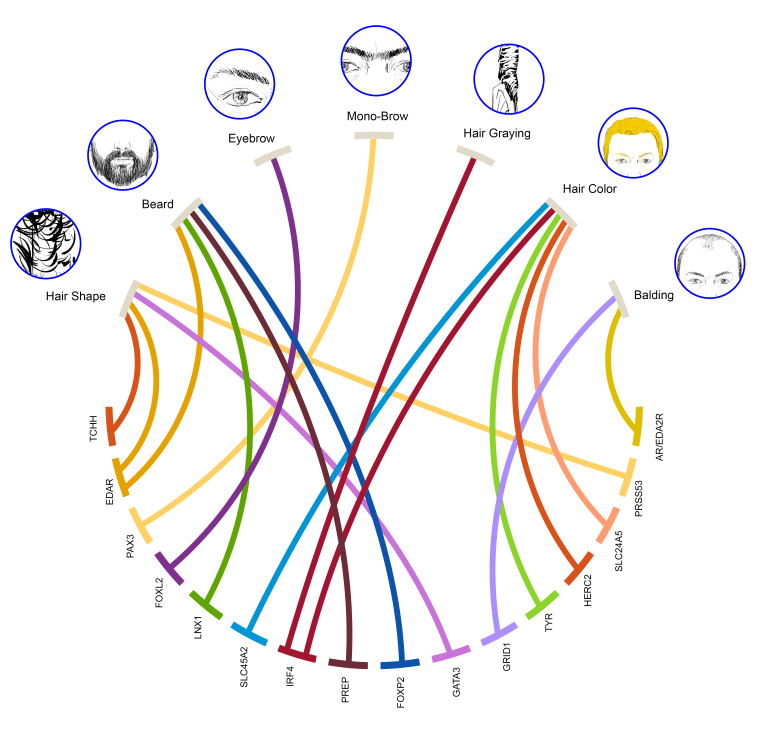A gene that affects cancer risk, freckles and eye color also plays a big role in turning hair gray, researchers reported Tuesday.
Their giant study of the genetics of hair also explains who some people have monobrows, why Asians and Native Americans have straight, glossy hair and why some men find it easier than others to grow a thick beard.
The findings may eventually help criminal forensics teams reconstruct what criminals or victims look like using a DNA sample, and could eventually lead to ways to prevent gray hair, the team reports in the journal Nature Communications.
The study also helps explain why people with certain hair types or colors are prone to certain diseases. For instance, one previous study found that people with lighter hair have a higher risk of Parkinson's disease.
While going gray early doesn’t mean you have a higher-than-average cancer risk, the study strengthens the confusing links between hair color and disease risk.
Related: Gene study shows how hair turns gray
“We were looking at beard density, eyebrow density and monobrow,” said Kaustubh Adhikari of University College London, who helped lead the study.
“We were looking at hair color, hair shape, gray hair and balding. For each of them we found a set of genes that define these features.”
Adhikari’s team looked at the entire gene maps of more than 6,000 Latin Americans, who have a very mixed genetic heritage. The volunteer populations are about half European, half Native American and have about 10 percent African ancestry.
“It is a genetic melting pot,” Adhikari said. “That gives you a huge genetic diversity.”

They found 10 genetic variations that affect how soon people go gray, how thick their hair is and how much facial hair they have, among other factors.
None overlaps much, they reported in the journal Nature Communications. Genes contributing to thick unibrows or monobrows are separate from the genes for balding or heavy beards.
For instance, they found a gene called IRF 4 (interferon regulatory factor 4) was known to play a role in hair and eye color, freckling and in how the body responds to viruses and leukemia.
Straight hair evolved in colder climates
Another gene called PRSS53 is associated with straight black hair, and was found only in people of east Asian and Native American descent. Adhikari believes it may have evolved as east Asian ancestors adapted to cold northern climates tens of thousands of years ago. “Straight hair is a consequence of your hair being thicker and stronger,” he said. And strong, thick hair may insulates the head better than curly hair, he said.
And do you have a thick unibrow? Blame a gene called PAX3. Adhikari’s team found that gene was common in people with thick eyebrows that meet over the nose.
Related: Study links gray hair to cancer
That’s not a complete surprise — rare mutations in PAX3 are linked with Waardenburg syndrome type 1, an inherited disorder marked by deafness, a wide nose and a thick, single brow.
It’s far too soon to think about a pill for gray hair. If nothing else, IRF4 is linked with cancer and it’s unlikely anyone would want to swap youthful locks for a higher cancer risk. In fact, the leukemia drug Gleevec can turn gray hair darker — but no one advocates using such an expensive drug, which also has side effects ranging from nausea to rash to hemorrhage, as a substitute for hair dye.
But it might be possible to use knowledge about the IRF4 gene to find other ways to affect hair as it grows out of the follicles, Adhikari’s team said.
And none of the genes appeared to act alone. “The genes we have identified are unlikely to work in isolation to cause graying or straight hair, or thick eyebrows, but have a role to play along with many other factors yet to be identified,” Adhikari said.